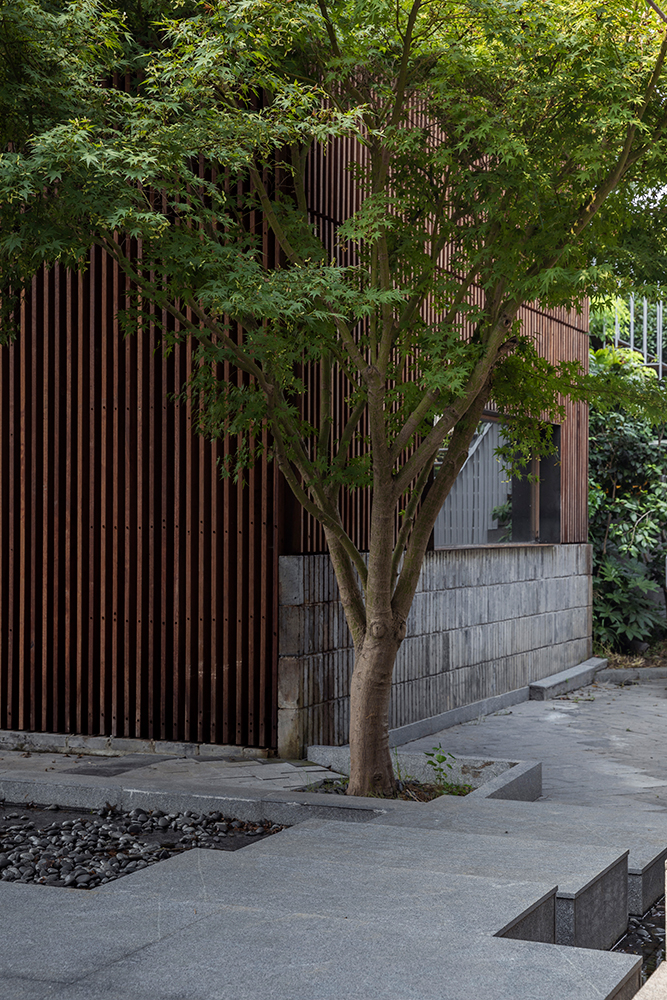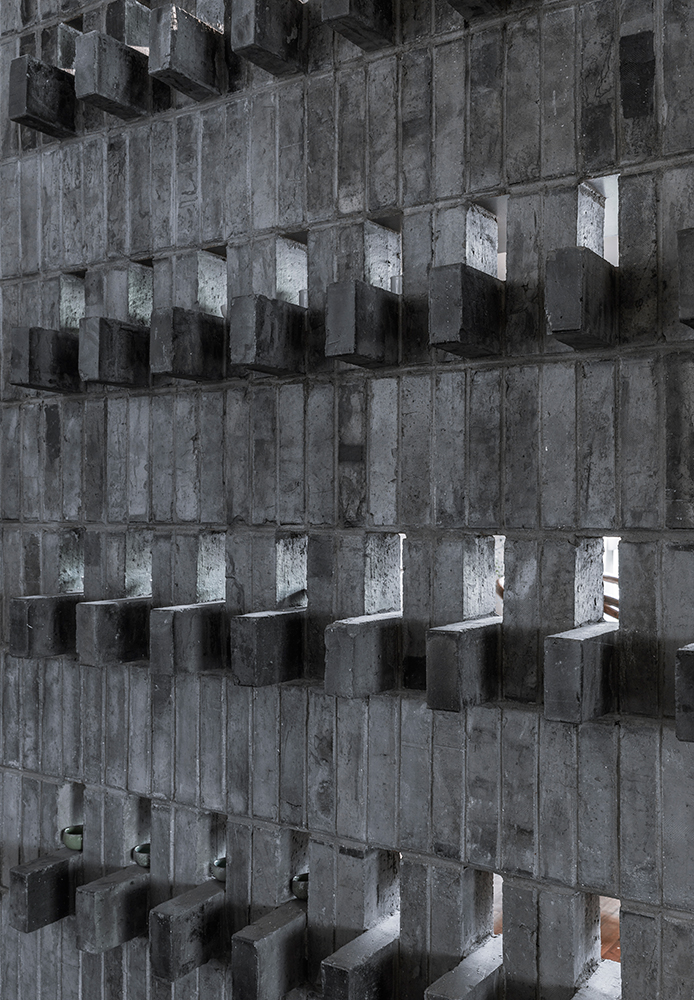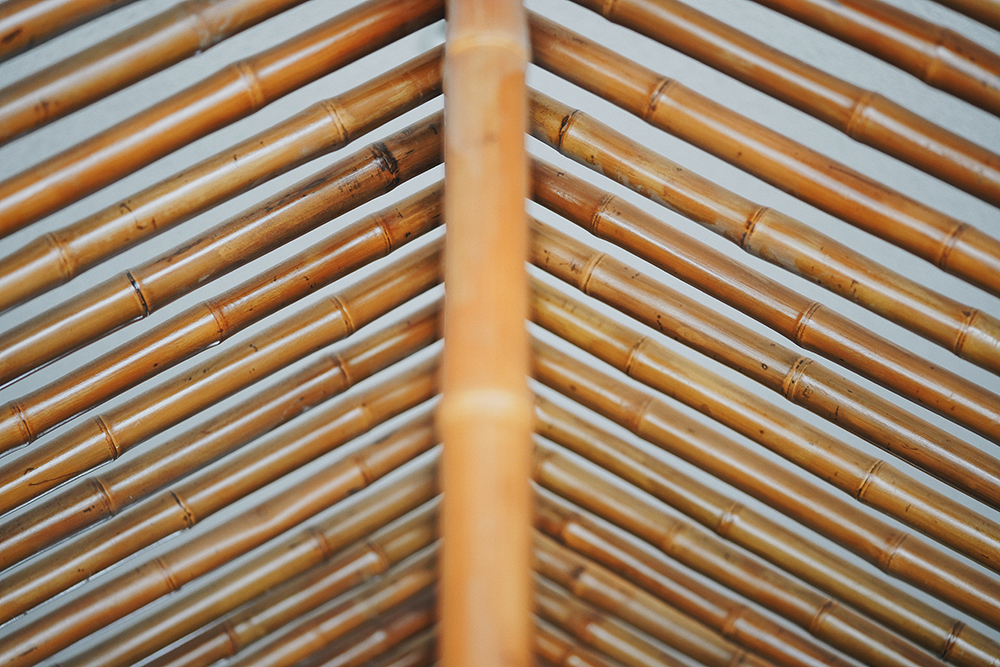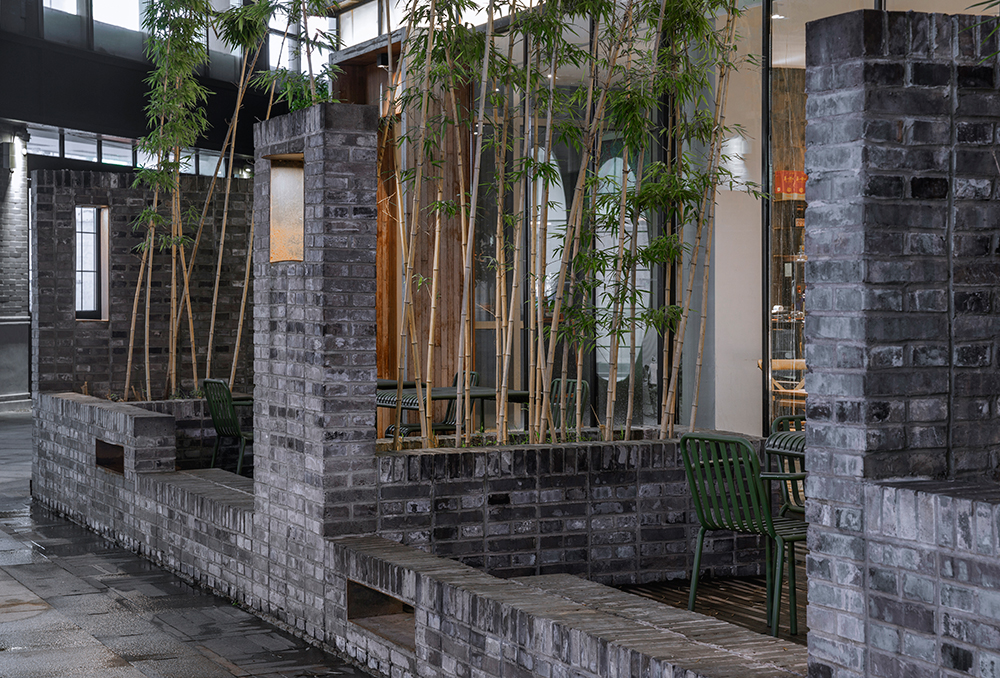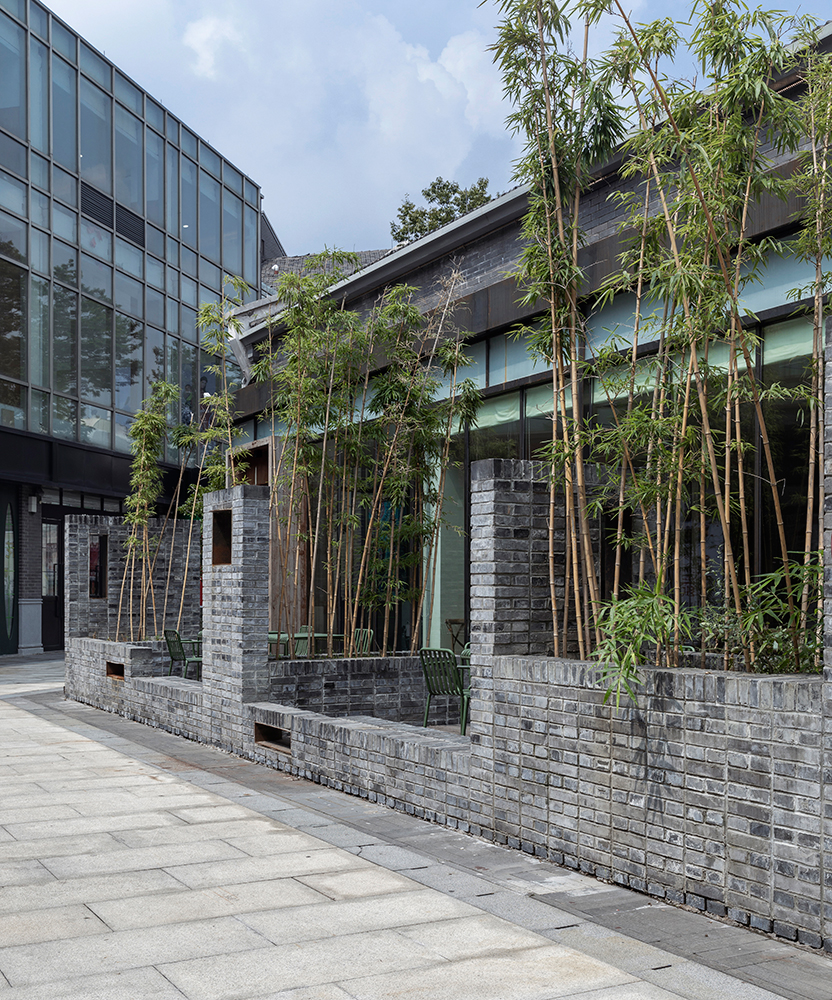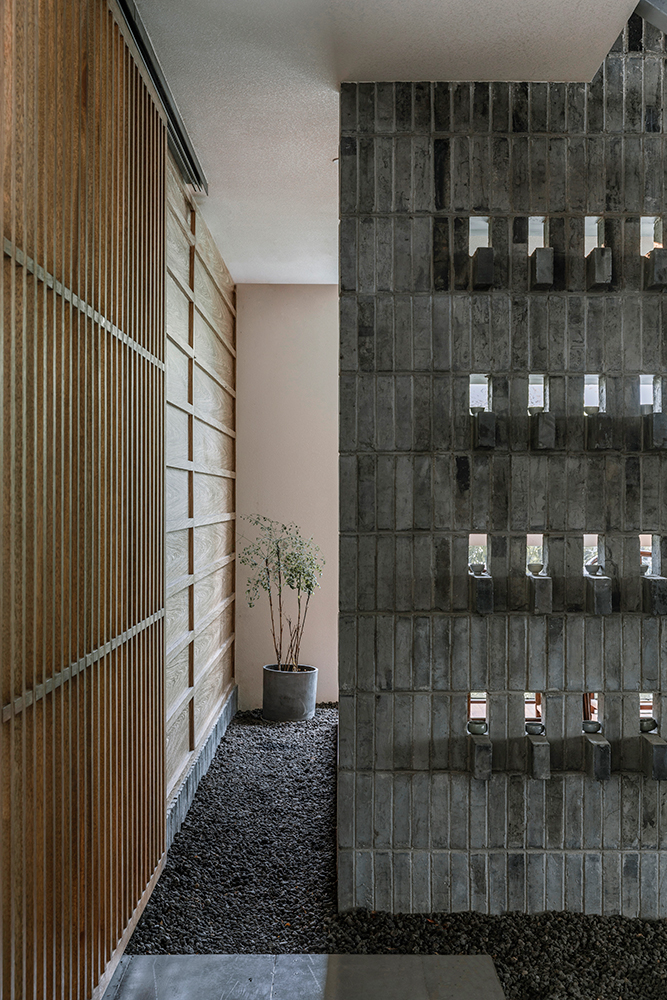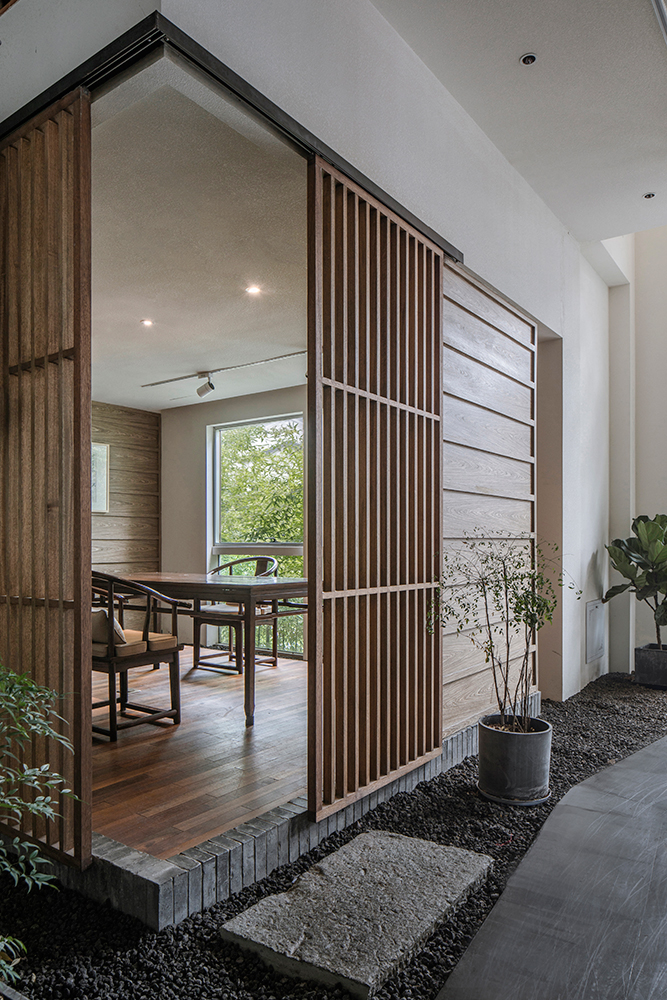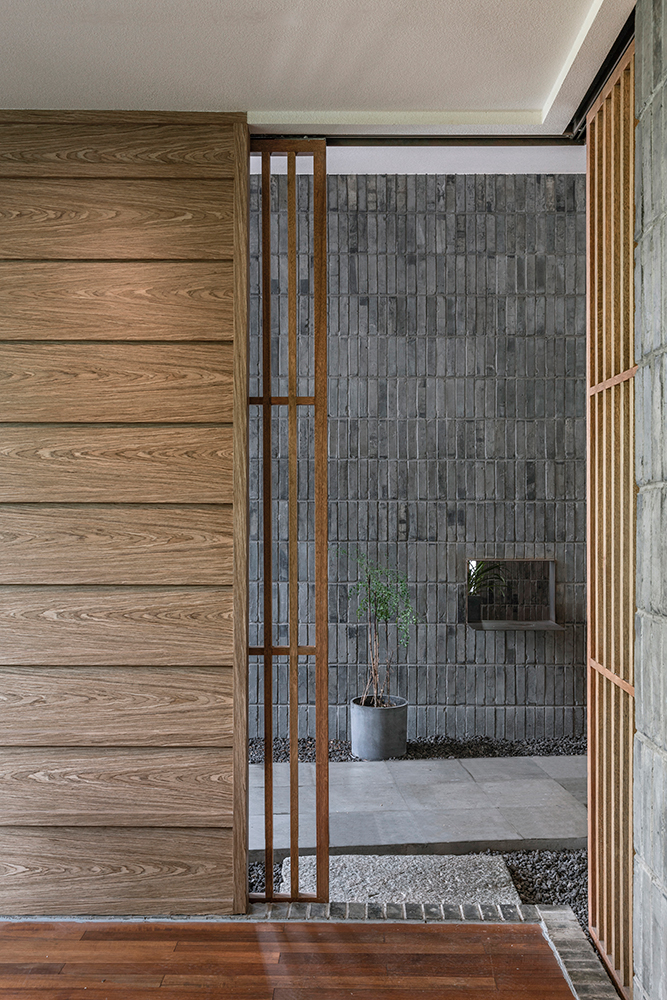AJIA TEAHOUSE
HANGZHOU 2019
TEMP, has designed a tea house in Xixi Wetland located at
the west part of Hangzhou, China. Xixi Wetland is a national park densely
packed with ponds, lakes, and swamps which also has a 1800 years of cultural
heritage.
The larger indoor space is formed by placing private rooms for drinking tea. These rooms are scattered around with stone paths connecting each other. While they are walled off by bricks to create a certain level of privacy, wooden louvers and gaps within walls offer a sense of opening. Varying levels of transparencies from heavy and solid to light and open form spaces of many layers.
The tea house is mainly built with the simple materials as bricks, wood, stones, and bamboo. Bricks are layered vertically with certain parts left porous. Wooden louvers slide or swing to open and close the the tea rooms. A few furniture and a pavilion are made from local bamboo structured in tenon joints.
The larger indoor space is formed by placing private rooms for drinking tea. These rooms are scattered around with stone paths connecting each other. While they are walled off by bricks to create a certain level of privacy, wooden louvers and gaps within walls offer a sense of opening. Varying levels of transparencies from heavy and solid to light and open form spaces of many layers.
The tea house is mainly built with the simple materials as bricks, wood, stones, and bamboo. Bricks are layered vertically with certain parts left porous. Wooden louvers slide or swing to open and close the the tea rooms. A few furniture and a pavilion are made from local bamboo structured in tenon joints.
The
outdoor courtyard is stepped into different heights of granite stairs and
platforms. Pools of water and trees
divide the larger space and create shade for the seating areas.
The tea house creates a place for drinking traditional Chinese tea in a modern way using simple materials. The project is spatially exploring to bring outdoor landscape indoors and to form layers of varying privacy and openness.
The tea house creates a place for drinking traditional Chinese tea in a modern way using simple materials. The project is spatially exploring to bring outdoor landscape indoors and to form layers of varying privacy and openness.
